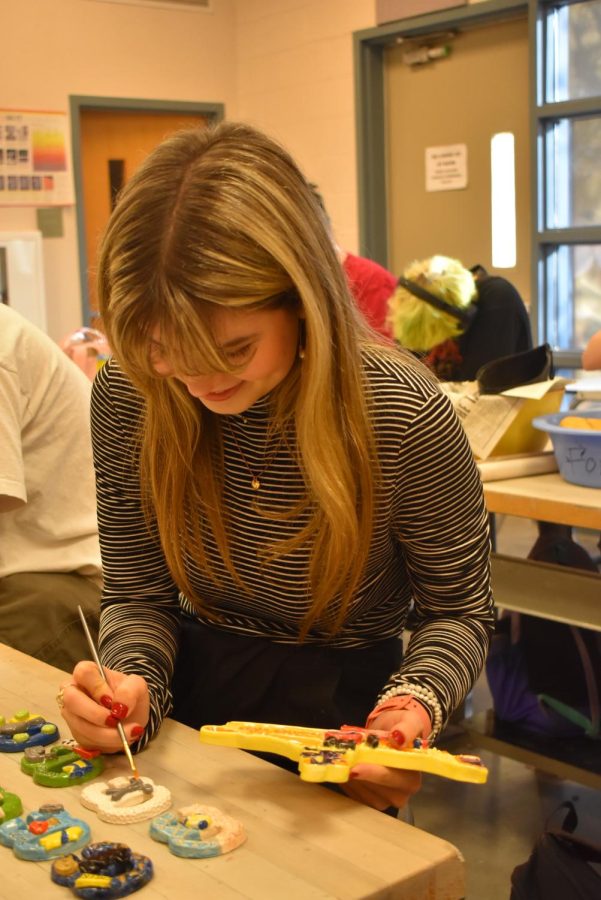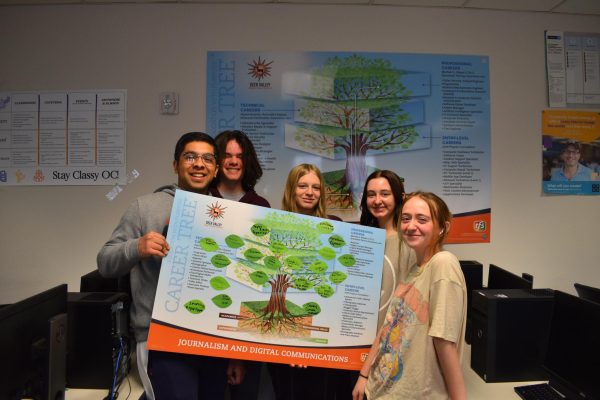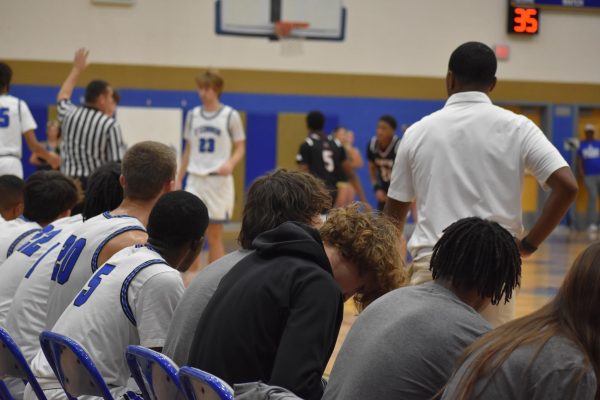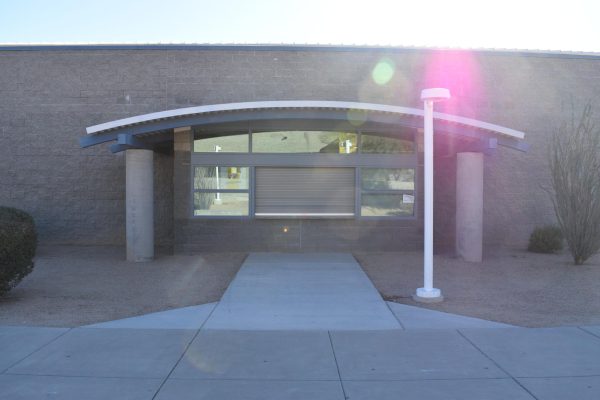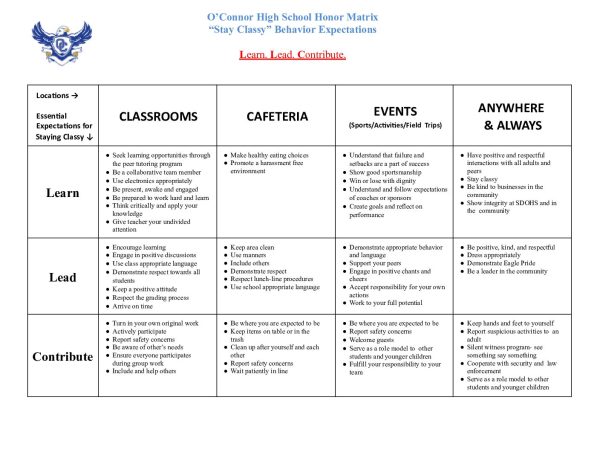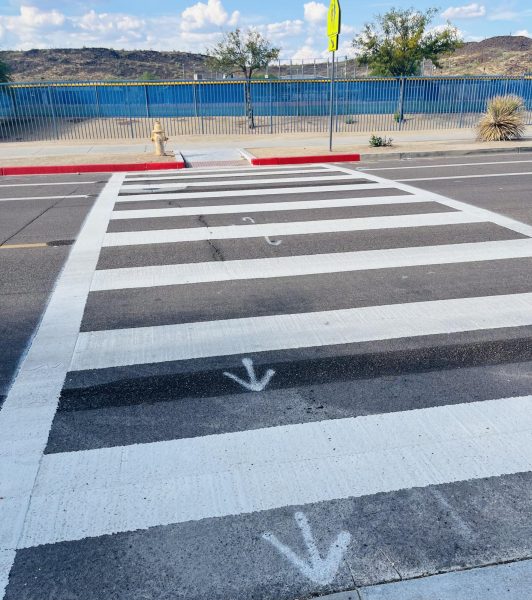Do not glaze over ceramic’s funding issue
Julia Martin, senior. has noticed funding struggles while being involved in the ceramics program for the past two years.
November 21, 2022
Through art, students are able to communicate their love and passions in a more distinctive manner. By receiving a more hands-on approach to learning, an individual’s creativity is able to be showcased in ways that another subject cannot achieve. Due to these benefits, art programs in schools are beneficial to the blossoming of a usually less-developed, more imaginative part of the brain; however, outside forces hinder these advantages.
At OHS, the ceramics program has long been a popular class among students of all grade levels. The interactive lessons and projects demonstrated throughout the year are great teaching tools, but a major issue challenges the accessibility of the supplies needed to effectively run this class: the lack of funding that is provided.
“We get only $1500 to spend at the ceramics shop so we have the students buy the tools, so that we can afford the glaze. I spent over a thousand of it just on the glaze,” said Melissa Niskala, ceramics teacher.
Though this program is granted a set amount of money every year by the district, it is not enough, forcing teachers to take matters into their own hands.
“The budget for ceramics and art in general is super small and the problem is that everything is super expensive. So teachers need to buy things out of their own pocket when their salary is small,” said Julia Martin, senior.
According to Dr. Lynn Miller, principal, every ceramics teacher receives $1500 plus an additional $350 each year. The clay is also covered, bringing the total Fine Arts budget to around $10,000 to $12,000 a school year. This brings about questions regarding how the budget is determined in the first place.
“The way funding for a high school specifically works is we have some funds that are earmarked for specific programs, and those come from the district, and then we also have discretionary funds. The principal gets an allotment from the district that is deemed for maintenance and management of the school,” said Johnathan Smith, assistant principal.
While the Fine Arts programs are provided some monetary resources by the district, Niskala was unaware of some of this assistance and what exactly was covered.
“I just did not know how much money we got for different things and where it came from. I knew we got $1500 for supplies and then another $300 but I didn’t know how much we got for clay,” Niskala said.
With the vast amount of materials needed, a breakdown of the cost of these items is beneficial. Overall, it can be seen that everything requires money, and a whole lot of it at that.
“A bottle of glaze is over $20 each plus there’s the materials of the clay. And then there’s the kiln. We need a new one but the new one is five grand. Since we have old [kilns], they have to come repair them, which also costs money,” Niskala said.
While there are currently some unanswered questions regarding the possible fixes of this problem, there are some ways that the school is working with the teachers in order to hopefully avoid the budgeting issue for future years.
“There might be more of a short-term solution here on campus. The plan is we’re going to try to focus on where these items are going to come from and plan for the future now. We might be looking at trying to buy some of that stuff earlier to hopefully get ahead of the wave [of rising costs] that might be coming,” Smith said.
Though possible solutions are being discussed, currently, students are unable to utilize their full potential due to the ongoing budget issue.
“We see a lot of YouTube videos on a bunch of cool stuff that we could learn and apply to our projects, but because we don’t have the materials to do that, we can’t really use the knowledge that we’re learning and apply it to what we’re making,” Martin said.
Due to the lack of materials available to supply so many students with, they are missing out on opportunities. This is a setback that makes it seem like students are not fully developing their art skills.
“We’re actually probably going to have to paint a project instead of glaze it, to conserve the glaze. It’s ceramics class so they should be able to glaze everything, but we just don’t have enough,” Niskala said.
In order for teachers to ask for more money to be put into their program, they must do some research. After this is complete, the administration can decide whether their desire is a want or a necessity.
“They [teachers] make a request for supplies, and they find out how much it is and where we can buy it from. They do all the work of finding what they’re actually asking for. Then we look at it and we make sure we have the money in whatever account that we can use to buy those things and we approve it or don’t approve it based on what the needs of the school are,” Smith said.
Yet another frustration for students is watching other programs get so much more money than they are receiving.
“It’s upsetting because all the sports got a new weightlifting room when I can’t imagine how much that cost, and in Ms. Niskala’s room, we’ve been dealing with a clogged sink for two years now,” Martin said.
While there are issues regarding funding, the school tries to provide resources for every program at school.
“I and our Admin team are big supporters of Fine Arts. I try my best to support everyone as much as possible,” Miller said.



